The Belgian Malinois ( Pronunciation: “MAL – in – wah”) have been trained to sniff out all kinds of things, including bombs and drugs. This versatility has made them a working dog of choice across the world.
Other Names: Malinois, Chien de Berger Belge, Mechelse Herder
Country Of Origin: Belgium
Dog Group: Sheepdog/herding dog
Size: Medium to large
Recommended For: Couples, single owners
Maintenance Level: Moderate to low
Lifespan: 10-15 years
Temperament: Intelligent, independent, loyal
FAQ:
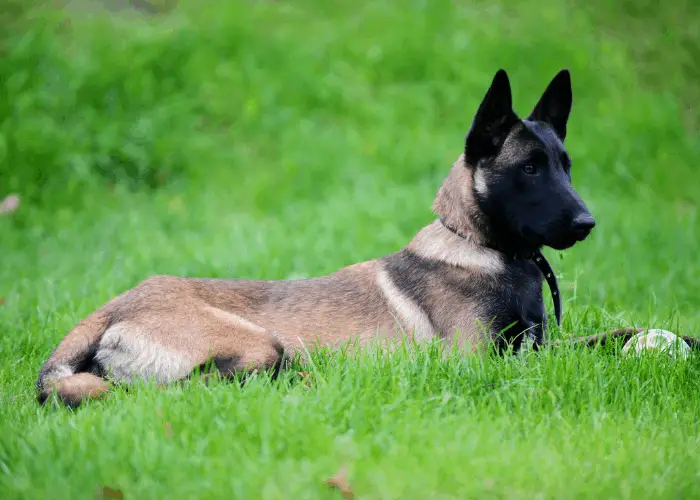
Good For First-Time Owner: No
Good With Children: No
Good With Other Animals: Yes
Good With Strangers: No
Good For Apartments: No
Exercise Requirements: Daily walking
Can Live In Hot Weather: Yes
Can Live In Cold Weather: Yes
Can Tolerate Being Left Alone: Yes
Grooming: Moderate to low
Trainability: Easy to moderate
Breed Overview:
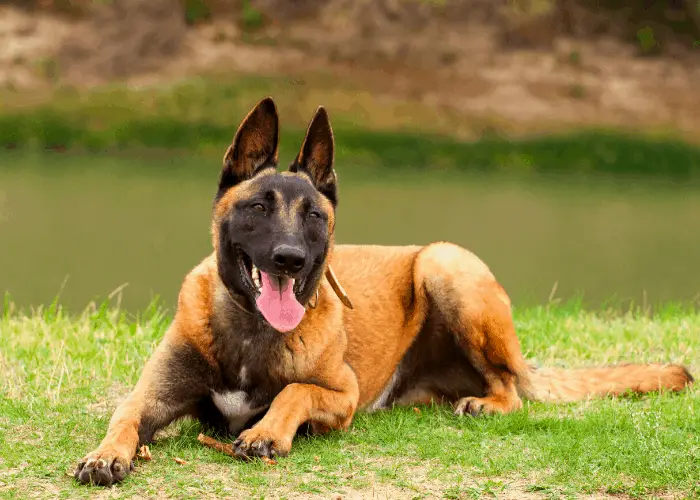
Bred mainly for herding livestock, such as sheep, the Malinois is a very hard-working and loyal dog. Its working role also means it’s very intelligent and highly trainable.
However, the Belgian Malinois is not very suitable as a family dog. It needs plenty of mental and physical stimulation that it might not find in a family home.
Malinois are still a popular companion pet outside of Belgium, but this is mostly owners who show them in competitions.
Colors: Mahogany, fawn, black
Height: Males – 24-26 inches, Females – 22-24 inches
Weight: Males – 55-66lbs, Females – 49-55lbs
Personality and Temperament:
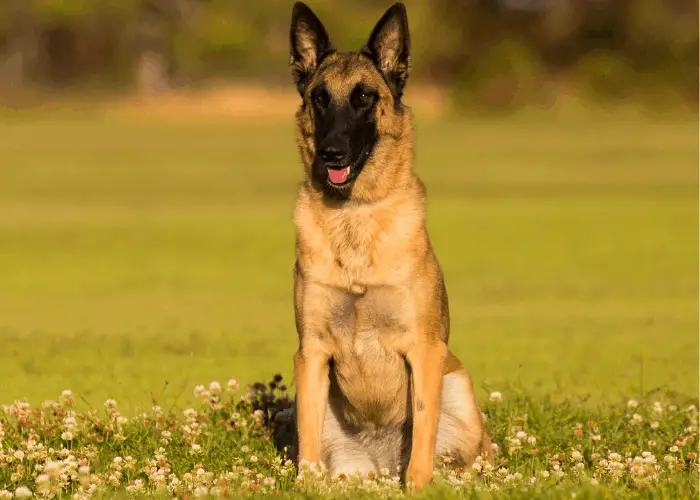
The Belgian Malinois is a breed originating in Belgium, where it’s long been used as a working dog.
The Malinois is a very intelligent breed that has a curious, affectionate, and friendly personality.
When directed at a constructive role, this intelligence can make the dog very hard working, but if they’re not given enough stimulation they can become destructive and depressed.
This is why they’re best used as a working dog or in competitions, because it gives them something to do.
One of the most interesting things about Belgian Malinois is that they’re not an aggressive breed, but can be trained to bite on command.
That said, Malinois aren’t dangerous dogs, and won’t become aggressive if socialized properly. They are known to have a strong prey instinct though, which means they might not be suitable as a family pet.
Belgian Malinois can be good around children, but they need to be socialized from a very young age.
Experienced owners don’t suggest keeping a Malinois as a family pet because it’s just not the right environment for the breed.
However, if the dog is still able to work and get enough stimulation then there’s little reason a family couldn’t keep one.

If they are to become a good family pet, then Belgian Malinois need plenty of training and socialization.
Malinois are a very trainable breed, and can pick up commands very easily. They can be trained as herding animals, or to work in security as a sniffer dog.
Also, Malinois are a great choice for those looking to get into dog shows because they excel in both agility and obedience trials.
Malinois need to begin training early and owners should be persistent because of the breed’s sometimes stubborn temperament.
This breed isn’t suitable for first-time owners because of the confidence and experience needed to train them properly.
Similarly, first-time dogs should be easy going, both from a maintenance and personality perspective. This description doesn’t really fit the Malinois, which can be stubborn due to their intelligence.
Malinois can have an interesting relationship with other animals, particularly dogs.
If socialized properly, they can have little issue, but the breed is known to have strong hunting and herding instincts, which can obviously be a problem if not kept under control.
Owners should be particularly wary around small animals, and even cats might be a problem. If you’re planning on getting a Malinois and have other pets, speak to the breeder first.
Due to their size and energy levels, Malinois aren’t suitable for keeping in an apartment. The breed much prefers to be outdoors, and enjoys having plenty of land to play and exercise on.

Belgian Malinois also have a tendency to be protective of their home, which can lead to barking. This is an obvious problem in an apartment, where there are likely to be plenty of potential strangers around.
Malinois are very energetic dogs, and need as much exercise as they can get. If the dog isn’t working then they should have at least 1 long walk a day, if not 2.
The more mental and physical stimulation the dog can be given, the happier they’ll be. This means walks should be supplemented with playtime at home, and Malinois particularly enjoy fetch.
The breed is fine to be left alone for longer periods because they would regularly do this when guarding livestock.
This makes them suitable for working owners, although Malinois will become depressed if not given enough to do.
Because they originate in Belgium, Malinois are suited to temperate climates, but are also fine to be kept in both hot and cold environments.
If you do live somewhere warm, just make sure the dog has access to plenty of shade and fresh water during the hottest times of the year.
Grooming:
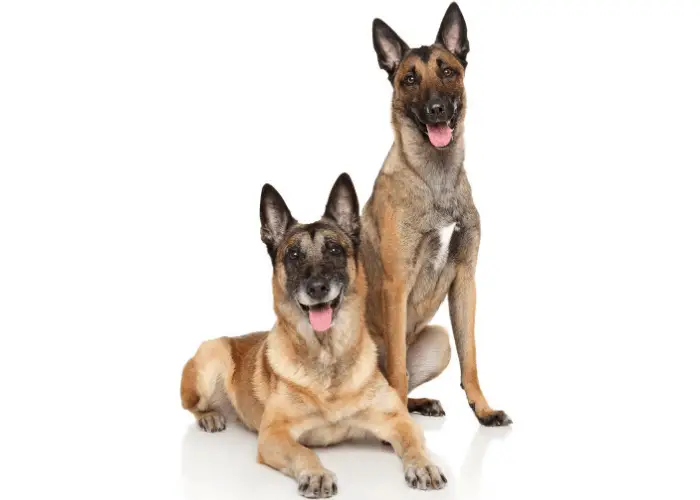
Belgian Malinois have a short, thick coat that’s almost waterproof.
They’re not known to be a heavily shedding breed, so a weekly brush with a rubber mitt or soft-bristle brush will be fine to help keep loose hairs in check.
The waterproof coat also means it’s not really necessary to bathe a Malinois, as it’s very difficult for smells and dirt to stick.
However, if they get really filthy then use a bath as a last resort, but always try just brushing them first.
As with all breeds it’s important to trim a Malinois’ nails regularly to avoid discomfort.
However, if the dog gets enough exercise then their nails should naturally wear down. Similarly, make sure you brush the dog’s teeth several times a week to avoid dental problems.
Common Diseases and Conditions:
Overall, the Malinois is quite a healthy breed, although it is known to suffer from some health conditions.
These include common purebred conditions, such as hip dysplasia, epilepsy, cataracts, progressive retinal atrophy and cancer
Belgian shepherd has been documented to be at higher risk of gastric carcinoma – Read The Article
History:

The Malinois originated in Belgium as a general working dog, and comes specifically from the city of Malines in the northwest.
This is how the breed got its name, although there is some disagreement over how specifically linked this particular breed is with the city.
This is mainly because there are 4 breeds classified as Belgian woking dogs or Belgian Sheperds, including the Malinois, and these were frequently bred together.
This was obviously before modern breed standards existed, and it meant that occasionally purebred dogs would give birth to a litter of puppies that were technically a different breed.
Malinois was one of the first European breeds of specific working dog, and has long served as the model for this type.

German shepherds are a very similar breed, but Malinois has longer legs and a finer bone structure.
The breed was first transported to the USA in 1911 where they became incredibly popular as a working dog.
However, this popularity declined once WW2 broke out because the government banned the transportation of dogs from Europe.
By the 1960s the breed’s luck has turned back around, and it became popular again, both as a working dog and a show dog.
The Malinois’ strong work ethic and intelligence make it an incredibly popular choice for a number of different roles.
While it still serves as a herding dog, it also finds work with the police and military as a sniffer dog.
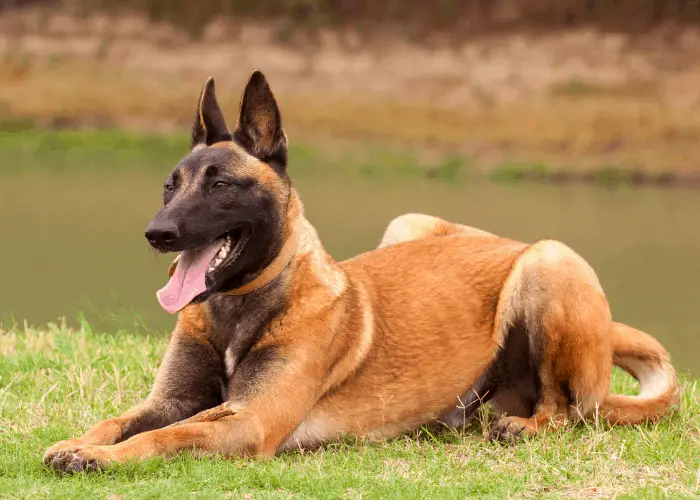
The Belgian Malinois has been recognized as a distinct breed by the American Kennel Club since 1959.
This recognition means that there are now strict standards in place, which means the 4 breeds have become progressively more distinctive.
The breed is also very popular as a show dog, and can be found competing in a wide range of different trials.
It’s particularly good at obedience and agility competitions because it’s very easy to train, and enjoys being rewarded.
Choosing Between GSD and Mal?
[ Read Our Mal vs GSD Comparison Here ]
Did You Know?
- Belgian Malinois is the breed of dog used by the White House Secret Service to protect and patrol the grounds.
- The breed is becoming an increasingly popular choice in countries such as India, where it has recently replaced the German Shepherd as the National Security Guard’s dog of choice.
- A Belgian Malinois also helped with Operation Neptune Spear, which was the US Navy Seal operation that killed Osama bin Laden. The dog’s name was Cairo.
- The Malinois is also becoming more popular as a working dog in hot countries, such as Israel, as its short coat makes it less prone to fatal overheating.
- Malinois are also used in conservation areas in South Africa to help stop animal poaching. One particular dog, called K9 Killer, has helped capture over 100 poachers.
- There is a services memorial to working dogs in Fayetteville, North Carolina. Its standout feature is a life-sized bronze statue of a Belgian Malinois.
- Malinois are also a popular choice in film and TV. For example, a Malinois appears as Daryl’s companion in the popular series The Walking Dead. There are also 2 Belgian Malinois in John Wick part 3
- 3 Belgian Malinois have won the Dickin Medal, which is awarded to animals for bravery while serving in military conflict. Their names were Diesel, Mali, and Kuga.
- If you’re thinking of getting a Belgian Malinois puppy, price is anywhere from $1,000-$2,500 from reputable breeders.
More Belgium Dog Breeds in the link below:

